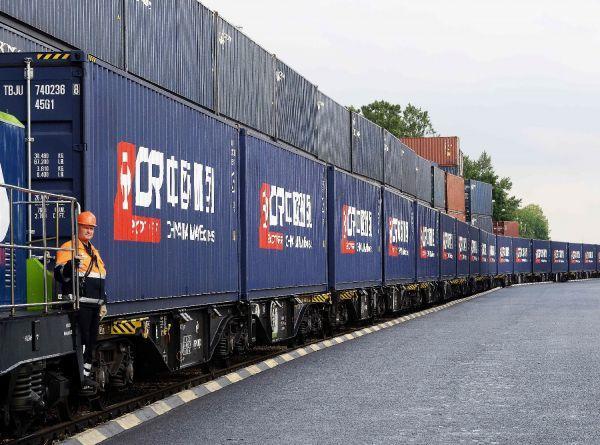‘Belt and Road’ serves as conduit for Europe-Asia cooperation

The first China Railway Express arrives in Poland on June 20, 2016.
From June 17 to 24, Chinese President Xi Jinping visited Serbia and Poland before addressing the Shanghai Cooperation Organization (SCO) summit in Uzbekistan.
Some scholars said Xi’s visit will facilitate practical cooperation between China and these three countries, noting that mutual benefit is the cornerstone of cooperation, while the development of the “Belt and Road” initiative is the highlight.
Because of shared experience, a long history of friendship and cultural recognition of the need to maintain state sovereignty, Serbia and Poland are welcoming the “Belt and Road” initiative, said Liang Zhanjun, professor of history at Capital Normal University.
Uzbekistan has coordinated its national development strategy with the “Belt and Road” initiative ever since it was proposed by China, said Chen Yurong, director of the Department of European-Central Asian Studies at China Institute of International Studies.
Xu Qinhua, professor of international relations at Renmin University of China, said the initiative will reduce uncertainty and provide a clear goal. At the same time, the “Belt and Road” initiative will improve the economic power of the entire region by combining China’s strengths with the respective advantages of countries along the routes, he said.
Multilateral platforms, such as the SCO and “16 Plus one Cooperation” will replace bilateral ones and all Eurasian countries within this framework will seek areas where common interests intersect, Xu said.
The “Belt and Road” initiative brings prosperity to China but also world as a whole, Xu said, adding that it is in sync with global economic development and meets the urgent demand for connection and communication among the countries along the proposed routes. China and Eurasian countries form a community with a shared future, and a consensus has been reached that all cultures should appreciate each other’s values and find common ground for deepening cooperation between China and Eurasian countries, he added.
Chen agreed, saying no single country can develop in isolation given the current global economic climate, and regional integration is progressing apace. China’s initiative corresponds to the actual needs of Eurasian countries, he said.
For a long time, countries under the “16 Plus One Cooperation” framework have been intermediaries rather the direct beneficiaries of trade between China and Western Europe, and the “Belt and Road” initiative aims to remedy this imbalance, Liang said. The economic effect of united internal development on the Eurasian continent will radiate outward, he said.
The effects of coupling and scale that will be achieved by connecting China to Serbia, Poland and Uzbekistan will contribute to the prosperity and stability of the Eurasian continent, Xu said.
Chen said the development of the “Belt and Road” initiative is a long-term and systematic project involving strategic vision and comprehensive planning. Serbia, Poland and Uzbekistan are located in a key position along the Europe-Asia economic corridor, and the development of these countries will not only benefit the economic development in local areas but also provide a platform for outside parties to make full use of regional resources for the development of a larger scale, she said.
Zhang Junrong and Lü Mengdi are reporters at the Chinese Social Sciences Today.
